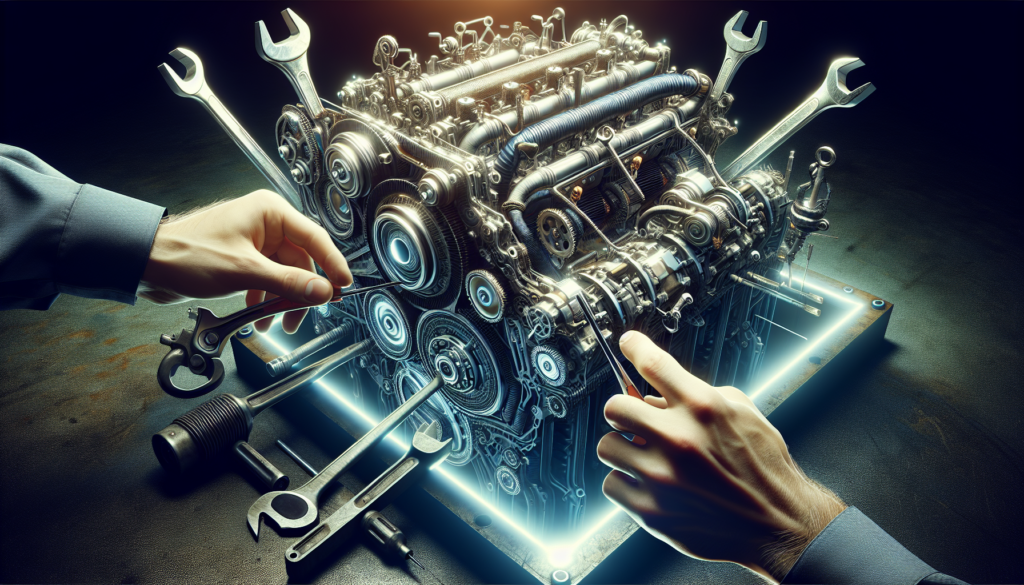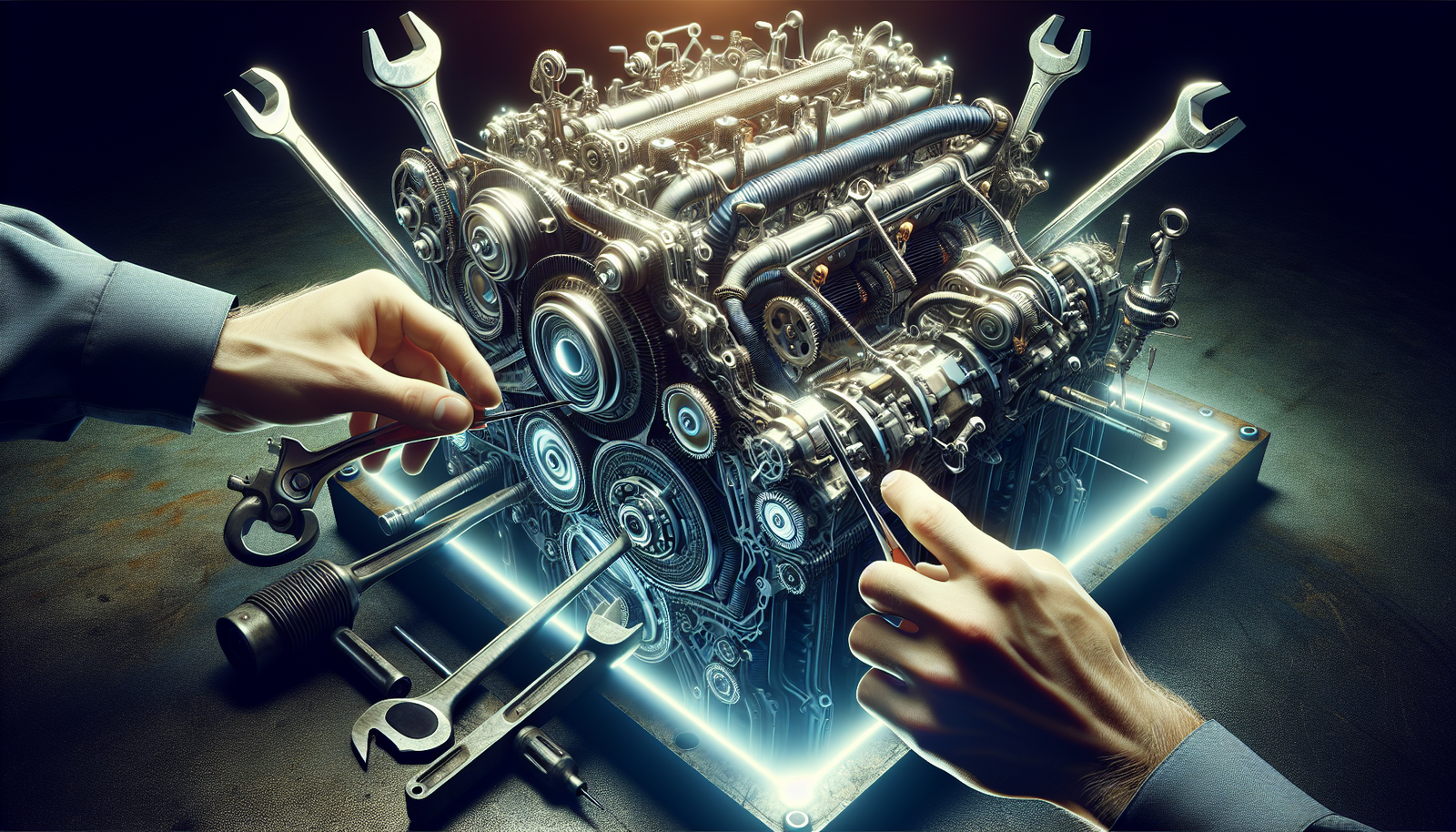It’s a balmy summer afternoon and you’re ready to stretch your boat’s legs. But hold your horses just yet. Do you know about the icing on the cake for your fantastic sea creature – the cooling system? From preventing rusting to avoiding the risk of a catastrophic engine failure, maintaining your boat engine’s cooling system is the lifeline for your water-based escapades. This article eases you through the key steps on how to properly service your boat engine’s cooling system, covering everything from assessing safety concerns, identifying and fixing engine problems, to providing essential tips on routine maintenance. Your boat is ready, are you?

Understand the Importance of the Cooling System
You might be wondering why there’s such a fuss about the cooling system in your boat engine. It’s because, just like in a car, the cooling system in a boat engine plays an essential role in ensuring that optimum engine temperatures are maintained during operation.
Essential role of the cooling system
The primary function of your boat engine’s cooling system is to prevent overheating, thereby protecting the engine from potential damage. Overheating can cause significant problems, including warped cylinders, broken pistons, and other severe engine issues. Consequently, your boat’s cooling system is arguably one of the most critical systems for safe and efficient boat operation.
Consequences of a poorly-maintained cooling system
Neglecting the cooling system’s maintenance can lead to devastating consequences. A poorly-maintained cooling system could lead to overheating issues and ultimately engine failure. Unattended leaks and the build-up of debris or rust can disrupt the cooling function, causing engine temperature to rise beyond permissible levels. In addition, repairs or replacements of damaged parts can make a sizable dent in your pocket. Hence it’s crucial to pay attention to your cooling system.
Types of Boat Engine Cooling Systems
There are various types of cooling systems used in boat engines, each with its own advantages and disadvantages.
Raw water cooling system
The raw water cooling system, also known as the open cooling system, utilizes the water that the boat is sailing in to cool the engine. This implies that the cooling medium varies with the kind of water bodies your boat sails in, be it seawater, freshwater, or even brackish water.
Fresh water or closed-loop cooling system
On the other hand, the freshwater or closed-loop system uses a coolant that continually circulates within the system. It’s similar to the cooling system found in your car but adapted for maritime use. It is a preferred option for boats cruising in harsh or unpredictable water conditions.
Keel cooling system
The keel cooling system, commonly found in certain commercial vessels and workboats, uses metal pipes mounted on the boat’s hull to disperse engine heat into the surrounding water without involving the use of a pump.
Comparison between different types of cooling systems
Each of these systems has its pros and cons. For example, while raw water systems may be simpler and cheaper to maintain, they are less efficient and more vulnerable to corrosion and marine growth due to direct exposure to seawater. On the other hand, freshwater systems offer better cooling efficiency and lower susceptibility to corrosion but are more complicated and costly.
Indicators of a Problematic Cooling System
Every boat owner should be aware of the signs that indicate a problem with the cooling system.
Increased engine temperature
One of the most straightforward signs of a cooling issue is overheating, where the engine runs at higher temperatures than usual. You should periodically check your engine’s temperature readings to make sure they’re within the desired operational range.
Unusual noises
Listening to your engine can also be helpful. Unusual sounds such as grinding, squeaking, or hissing noises might indicate potential trouble. These sounds emanate when components rub together due to increasing heat resulting from the cooling system failure.
Loss of engine power
A drop in your engine’s performance, such as power loss or stalling, can also raise red flags. This happens when the engine gets too hot and fails to work optimally.
Visible leaks in the cooling system
Lastly, be on the lookout for visible leaks or puddles of coolant under your boat. This is an undeniable sign of a cooling system issue.
Basic Tools and Supplies Required
To keep your boat’s cooling system in tip-top condition, you’ll need a set of basic tools and supplies.
Standard toolbox essentials
A standard toolbox equipped with wrenches, screwdrivers, pliers, and hammers will come in handy for routine checks and quick fixes.
Specialized marine tools
Additionally, you may need some specialized marine tools, such as a prop wrench or marine sealant. These are suited for the peculiar needs of boat maintenance.
Safety gear and equipment
Don’t forget about safety equipment! Protective gloves, safety glasses, and a first-aid kit are must-haves to ensure your personal safety while servicing your boat’s engine.
Cleaning and repair supplies
Finally, you’ll need a set of cleaning supplies like a marine degreaser, soft cloth, and brushes to clean the engine and system parts. Don’t forget to stock up on replacement parts like belts and hoses, and a quality coolant for top-ups or replacements.

Periodic Visual Inspection of the Cooling System
A physical inspection is perhaps one of the most straightforward preventative measures to ensure your cooling system’s health.
Inspecting for visible leaks
Look around for signs of coolant leakage. Places to look include the water pump gasket, hoses, or any part of the system that contains coolant.
Checking rust and corrosion
Check for any signs of rust or corrosion on the system’s components, especially if you have a raw water cooling system. Excessive rust is a sure-fire sign that something needs to be fixed.
Observing the color of the coolant
The color of the coolant can tell a lot about its condition. The coolant should ideally be clean and clear. If it’s discolored, cloudy, or has visible debris, it’s definitely time for a change!
Assessing the condition of hoses and belts
Examine the hoses and belts for signs of wear and tear. Cracks, breaks, and any visible damage mean they should be replaced immediately.
Changing the Coolant
Performing a coolant change can help keep your engine running smoothly and also extend its life.
When to change the coolant
A good rule of thumb is to change the coolant every year, or every 100 hours of engine operation, whichever comes first. However, the timing may vary based on your boat manufacturer’s instructions.
Choosing the right coolant for your boat engine
It’s essential to use the right coolant for your boat. Not just any coolant will do. It should be specifically made for marine use and compatible with your specific engine type and cooling system.
Step-by-step process of changing the coolant
Start by turning off the engine and letting it cool down. Once it’s safe to touch, remove the coolant cap and drain the old coolant. Then, refill the system with the new coolant, making sure to follow the manufacturer’s instructions on the correct coolant-to-water ratio.

Cleaning the Cooling System
A clean cooling system ensures better efficiency and longer engine life.
Importance of cleaning the cooling system
Regular cleaning removes rust, scale, and any marine growth that can build up inside the cooling system, leading to reduced efficiency and potential blockages.
Tools and supplies for cleaning
You will need a cleaning solution designed for marine engines, along with some fresh water. A hose and bucket will also come in handy.
Procedure for cleaning the cooling system
Start by draining the coolant, followed by flushing the system with clean water. Then, fill it with your cleaning solution and operate the engine until it reaches its operating temperature. Let it cool, then drain and repeat this process with fresh water until all the cleaning solution is removed.
Checking and Replacing Hoses and Belts
Maintaining the condition of hoses and belts is vital for the functioning of the cooling system.
Signs of worn-out hoses and belts
Keep an eye out for bulges, cracks, and signs of hardening or softening on your hoses and belts. If you notice any such signs, it’s time for a replacement.
Process of checking hoses and belts
Regular visual inspection is a good start, but do not stop there. Give your hoses and belts a good feel as well. They should be firm yet flexible.
Steps for replacing hoses and belts
Start by loosening the clamps on your hose or removing the tensioner on your belt. Then, pull the old part off its fittings and replace it with the new one. Make sure to secure the new part tightly to prevent leaks or slips.

Servicing the Water Pump
A well-functioning pump is key to a functional cooling system.
Role of the water pump in the cooling system
The water pump is responsible for pushing the coolant through your cooling system, ensuring it reaches all the parts of the engine that need cooling.
Indicators of a faulty water pump
If you see coolant leakage from the water pump or hear unusual noise, it could indicate your pump is failing. Overheating is another clear sign of pump failure.
Servicing and replacing the water pump
Some signs, like leakage, might mean the pump needs to be replaced, while others, like noise, could indicate a need for simple servicing. Be sure to consult your manual or a professional mechanic to make the right call.
Routine Maintenance and Servicing Schedule
Regular maintenance is the key to preventing cooling system issues.
Importance of a regular maintenance schedule
Sticking to a regular servicing schedule ensures that potential issues are identified and addressed in good time, saving you from costly repairs and potentially dangerous situations out in the water.
Setting up a servicing routine
A handy servicing routine might include monthly visual inspections, cleaning every six months, and annual coolant changes. However, be sure to consult your manufacturer’s manual to create a servicing schedule that suits your boat engine’s specific needs.
Seasonal servicing tips
If you live in an area with a harsh winter, you may need to conduct special winterizing procedures to protect the cooling system.
Professional servicing vs DIY
While DIY checks and maintenance go a long way in preventing issues, it’s also a good idea to have your boat professionally serviced at least once a year. A professional mechanic has the expertise to spot less obvious problems that you might miss.
By understanding the importance of your boat engine’s cooling system and properly servicing it, you can ensure a smooth sail. All you need is the right knowledge and tools, a solid maintenance schedule, and an attentive eye. Happy sailing!

